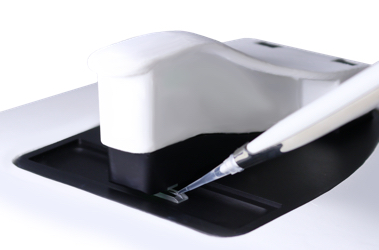Manual cell counting is a foundational process in modern biochemistry, which stems back to the early days of modern cell theory and the invention of the hemocytometer. The basic premise involves a skilled laboratory technician observing an assayed cell population in a counting chamber under a microscope, and manually recording the visible data. Though laborious, this method continues to be of value in various life science applications.
Automated cell counters are a disruptive technology designed to revolutionise the counting process by eliminating the margin for human error and yielding more accurate cell counts. With built-in optics and sophisticated algorithmic counting software that enables users to programme a diverse set of experiment profiles, automated cell counters are envisaged as the clear successor to manual systems like the tried-and-trusted hemocytometer.
However, the needs of no two laboratories are the same. So, can we categorically define either manual or automated cell counters as the best? Here we will compare the two in two key areas to determine their viability in various biochemistry applications.
Hemocytometers or Automated Cell Counters?
Accuracy
Hemocytometers are microscope slides comprising a rectangular indentation etched with a precise counting grid of nine squares cross-sectioned into areas of 0.00025 mm2. Samples are pipetted into the recess and a cover slip is placed on top to define the height of the chamber. By defining the dimensions of the counting chamber, it is possible to visually observe an area on the grid to determine the concentration of cells in a specific volume. However, this is all fundamentally dependent on human subjectivity to correctly differentiate between cells and debris and to determine which cells are viable. Automated cell counters avoid user subjectivity, relying on algorithmically-driven counting software for accurate and repeatable results. Thus, from an accuracy perspective, automated cell counters are superior to hemocytometers, having the potential to eliminate user-to-user variability.
Cost
At first glance, hemocytometry may seem cheaper than automating cell counting and viability tests due to the greater upfront cost of most automated cell counting systems. Yet by eliminating the need for constant operator supervision and the need for ongoing expenses associated with disposable plastic slides, automated cell counters add value in terms of time-saved. Improved data quality and consistency at this stage of the workflow can also be major contributors to downstream assay success.
This category largely depends on the current scale of your operations and future scalability plans. Larger facilities carrying out high-throughput counts for a range of applications will certainly benefit from the investment in an automated cell counter. Budget-constrained labs must approach the question of cost from a holistic point of view. Is the upfront cost now worth significant savings in the future?
Automated Cell Counters from DeNovix
If you are unfamiliar with automated cell counting and would like to speak with an expert on the subject, contact a member of the DeNovix team today and we can talk you through the benefits and costing of our automated cell counters.





